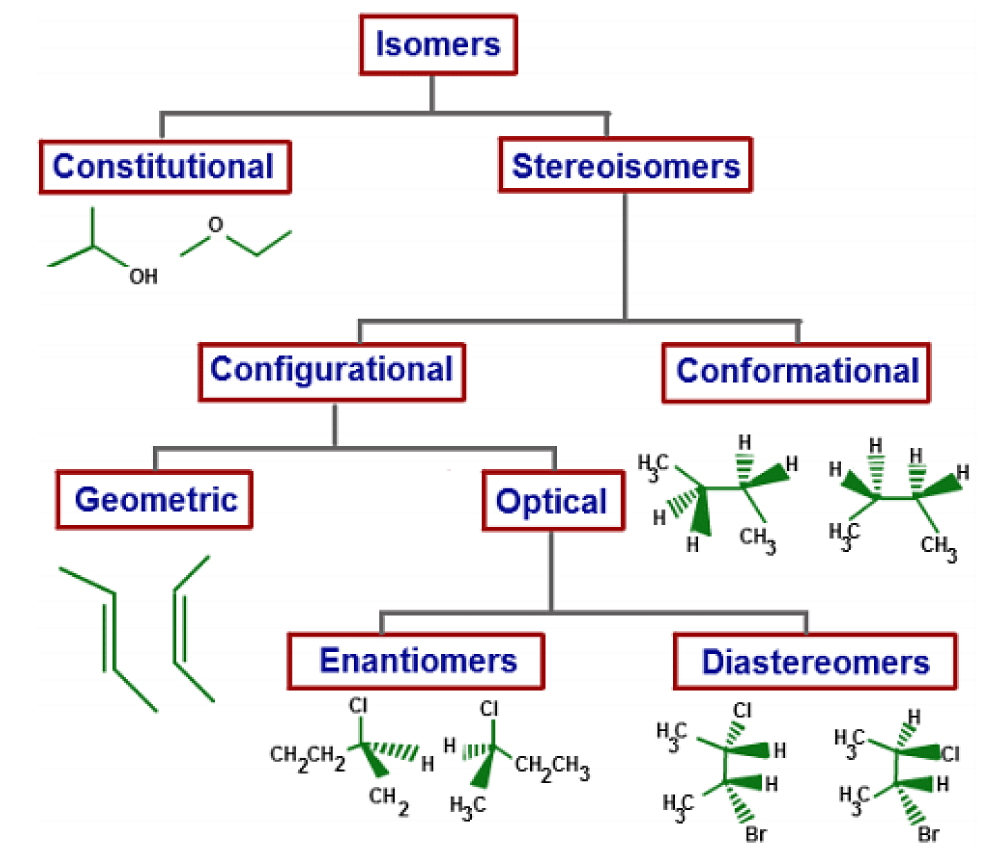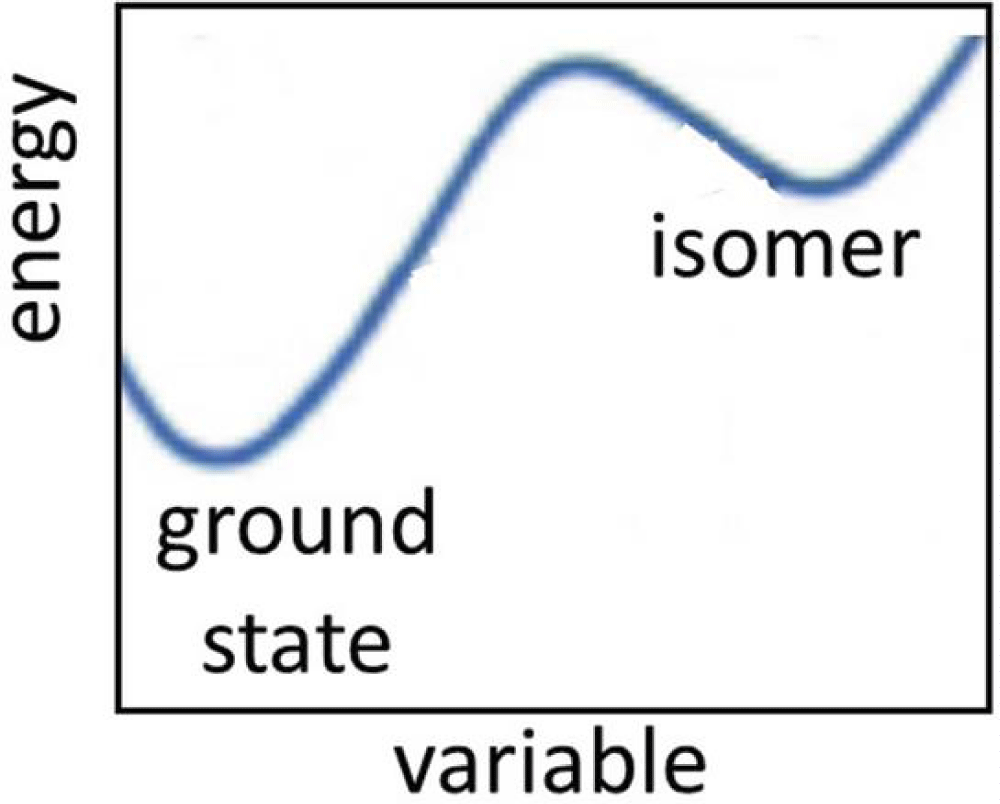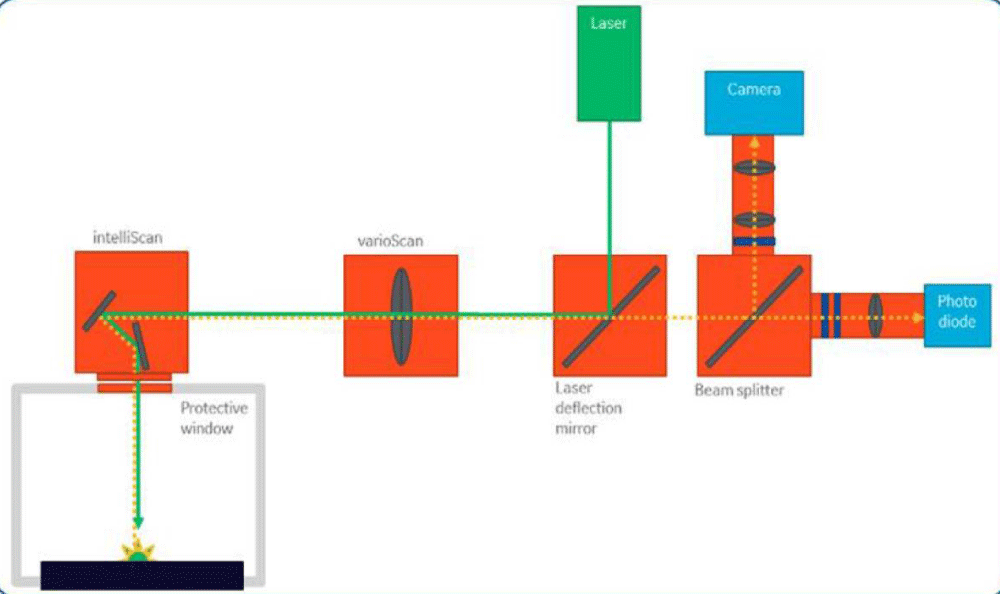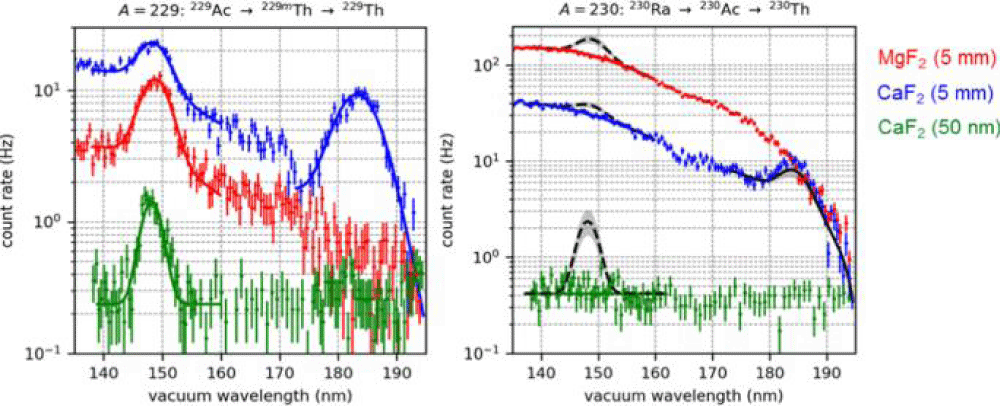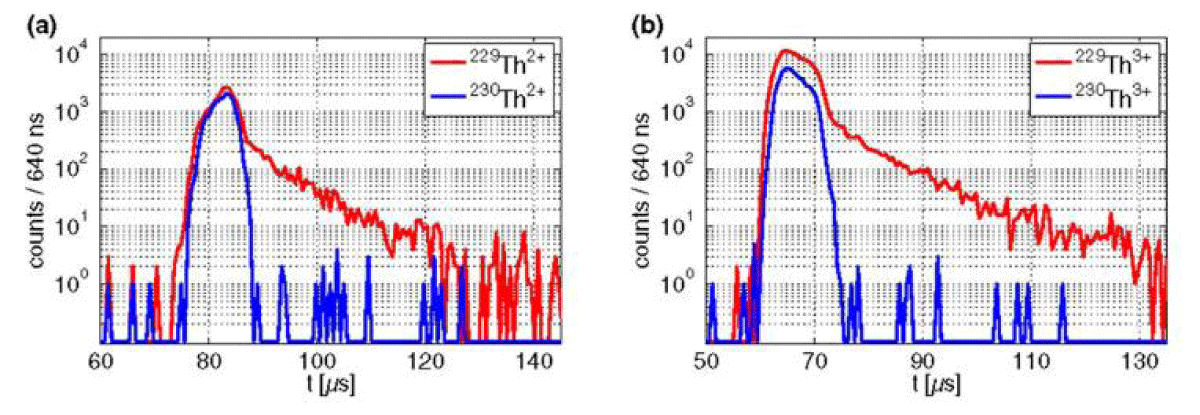More Information
Submitted: May 27, 2024 | Approved: June 08, 2024 | Published: June 10, 2024
How to cite this article: Saeed EF. Using Isomets as a Foundation, a Connection Factor between Nucleation and Atomic Physics. Ann Adv Chem. 2024; 8: 012-018.
DOI: 10.29328/journal.aac.1001050
Copyright License: © Saeed EF. This is an open access article distributed under the Creative Commons Attribution License, which permits unrestricted use, distribution, and reproduction in any medium, provided the original work is properly cited.
Keywords: Isomers; Nuclear; Radioactive; Electrons; Decay; Multi-group; Energy; Electron
Using Isomets as a Foundation, a Connection Factor between Nucleation and Atomic Physics
Esraa Fareed Saeed*
Department of Science, Physics and Earth Sciences Curriculum Division, General Directorate of Curriculum, Ministry of Education, Iraq
*Address for Correspondence: Esraa Fareed Saeed, Department of Science, Physics and Earth Sciences Curriculum Division, General Directorate of Curriculum, Ministry of Education, Iraq, Email: [email protected]
It will be precisely a century later in 2021 when Otto Hahn made the initial discovery of nuclear isomerism. Durable nuclear states of excitement provide insight into the nuclear framework and potential uses. Atomic and molecular changes become interconnected when connection to the electrons in atoms is made possible by the existence of em decay routes from isomers. Notably renowned chemical decay process is inner convert. Its inverted, nuclear excitement by free capture of electrons has been observed; however it is debatable and needs more investigation. This study describes the connection connecting radioactive and molecular changes and discusses instances of manipulating nuclear moves related to isomers using external electromagnetic fields.
Rutherford (1911) demonstrated that the nucleus of a molecule is minuscule in relation to the atomic. Moreover, the atomic electrons provide a buffer between the nucleus and the outside world. Consequently, it is particularly interesting to determine the potential degree that exogenous low-energy instruments can control the nucleus, directly or indirectly via contacts with the molecular electron [1,2]. Despite the components being believed to be the same at the time, Rutherford and Andrade’s (1914) groundbreaking γ-ray experiments revealed that the nucleus itself possesses high states that include distinct orbiting geometries of its component members and particles. According to Soddy’s (1917) theory, a particular nuclear creatures, or nuclide, may have high states that last for an extended period of time.
At the time of written form, Hahn (1921) had identified the first example of this type of material, 234Pa, which has a state of excited with an average half-life of 1.2 minutes and a neutral state having an a half-life of 6.7 hours. Further studies found additional types of nuclear isomerism as such namely shape isomorphism (where a severe shape change prevents an excited state from decaying to the ground state) and K the isomerism (caused by massive shifts in the path of the velocity vector in warped nuclei). Walker and Dracoulis (1999), Dracoulis, et al. (2016), and Walker and Podolyák (2020, 2022) go into further depth on this topic [2].
In 229Th, the measured energy of stimulation of isomers is as low as 8 eV, while in 208Pb and 148Gd, they reach over 13 MeV. Molecular temperatures of order 1 eV are significantly less than energies of hundreds of millions of eV. Controlling the radioactive decomposition of an isomer might have an extensive list of possible uses in the energy sector, including γ-ray lasers and nuclear cells [3]. In addition, the idea that isomer decay may be magnetically controlled by remotely applied energy stems from the fact that isomer degradation is (typically) electro. Still, identifying and optimizing the right circumstances is a difficulty.
Still, additional choice is needed to find isomers when outside perturbations might have detectable effects. A possible strategy, as shown conceptually, is to concentrate on isomers that decay can avoid the isomer its own, namely those with excitation energy is slightly less than that in a different (intermediate) state [4]. Thus, the power contained in the isomer would have to be liberated if outside forces could activate the transitional state. Moreover, it is possible to identify the energy of the skipping decay irradiation which differs from the frequency of the natural isomer dissolution. Additionally, the energy of the bypassed decay might be larger compared to of the stimulating external radiation, making it possible to identify the stimulation activity beyond the dispersed outside electromagnetic “expertise.”
The field of nuclear reactors economics has long aspired to predictable methods for whole-core unit modeling that utilize neutron transmission. Reliable emitter agnostic multi-group section (MGXS) creation is a major difficulty for whole-core multi-group transportation schemes [5]. In order to generate geographically homogenized and power compressed MGXS for every geographical zone and power group, the MGXS creation procedure employs a number of estimates. The literature has extensively addressed a number of assumptions pertaining to multi-group theory, such as the choice of separated energy structures for groups and the reduction of the legendary extension of the multi-group dispersion kernel. Less is known, though, about the practical implications of the flux separation estimation, which allows one to evaluate continuously changing energy cross sections using the scalar neutron flux instead of the angle of neutron output [6].
The main challenge in producing acceptable nuclear information is the requirement for precise flux knowledge in order to construct MGXS. However as this study demonstrates, using higher-fidelity collapsed spectrum is insufficient for diverse MGXS since it reveals additional mistakes resulting from assumptions made during the derivation of the multi-group solutions. This article demonstrates that a flux independence assumption leads to an insignificant amplitude bias among constant energy and multi-group simulations owing to over-prediction of U-238 absorption in resonant energy organizations, regardless of what the “true” scalar flux is utilized to construct MGXS [7].
It is appropriate to consider the ongoing significance of nuclear isomers, and or thrilled metastable due to forms of nuclei, in the context of the current era of radioisotope lasers for the nuclear physics study [8]. Valiant studies with minuscule amounts of isomer objects pave the path for the vast panoramas of isomer supports, and novel opportunities test our creativity at the nexus of atomic and particle physics. The distinguishing characteristic of isomers is a result of their very lengthy periods of time [9].
Strong isomers
The majority of isomers are shell-model entities with a couple, but sometimes as many as 10, distinct unoccupied nucleon the orbitals. The extended periods of time of isomer disintegration originate from the need to emit high-spin and/or low-energy radiation since the isomer-related the orbitals usually pair to produce higher-spin configurations compared to alternative pairings at similar energies [10]. An important characteristic in the case of distorted nuclei with a symmetrical axis is the direction of the angular-momentum vector is a term which has a roughly constant representation, K, on the plane of symmetry and produces the appearance of K isomers that are.
Given the strong resemblance to shell-model travels around, an isothermal might be regarded as a “simple” phase with an established wave function. In a way, multi-particle the isomers are more straightforward than grounded states since pairing connections are blocked in them [11]. However, there is a strong dependency on low-amplitude wave function additives, and the reported electromagnetic waves from isomers often violate the selection criteria. Figure 1 provides an exploded representation of a few of these qualities.
Figure 1: Even though isomers are thought to have straightforward shell-model arrangements, a variety of factors can affect how quickly they decay.
The last major type of isomers is structure isomers, such as nuclear isomers, where the extended half-life is caused by a change in form instead of an acceleration shift. While there are certain overlaps—K traps additionally qualify as yeast pitfalls because they fall on the yeast line, for example—the various isomer kinds may be roughly distinguished by their broader sources employing energy-spin participation, as demonstrated in Figure 2 [12].
Figure 2: Isomer kinds are represented schematically in the energy-spin region.
Statement of the problem
Isomers are frequently extremely complicated nuclear structures with precise amounts of energy and disintegration mechanisms. It takes advanced mathematical theories and empirical approaches to comprehend their behavior and the way it connects to atomic structure [13]. Creating thorough theoretical frameworks and properly analyzing experimental results can be difficult due to the extreme nature of isomeric organisms. This intricacy could make it more difficult to use the research on isomers to build a coherent connection between atomic and atomic physics. Because many atomic isomers of have incredibly lengthy lives, it is difficult to do studies on these.
Furthermore, the synthesis of certain isomeric states frequently calls for specialized methods and equipment, such as reactors or accelerators of particles. Some isomers of systems have restricted information from experiments access, which might limit study breadth and impede efforts to investigate their relationship to atomic physics. It is hard to comprehend the significance of isomers as a link among nuclear and atomic physics without extensive scientific proof [14].
Using methods and ideas from both domains, a combination of disciplines will be used to study the function of isomers as a bridge between nuclear and atomic Physics. To begin with, a thorough literature analysis will be carried out in order to determine the current state of research and any gaps concerning nuclear isomers and their relationship to atomic structure. The overview will include work from atomic physics investigating electron arrangements and the levels of energy, as well as research from nuclear physics that focused on isomers of transition and associated characteristics [15]. The integration of these two collections of information will help to shape theories about how atomic isomers and atomic arrangement relate to one another.
After the immediate detection of the ground-state decay of the element tho isomer, the next logical exploratory actions concentrated on characterizing its characteristics above the basic limitations provided in [52]. These included an average lifetime of the (ionic) thorium isomer of > 1 min (limited by the ion’s life-time in the vacuum imposed by the so-far used radio-frequency quadrupole) and an excitation energy range of 6.3 eV - 18.3 eV (inspired by the first and third ionization potentials of thorium) [16].
The half-life of the isomeric neutrality
By using the same testing technique as in, the half-lives of 229m Th might be investigated by populating the thorium isomer. Figure 3 illustrates the measuring technique. By using the RFQ’s 12-fold separation as the linear Paul capture, a wrapped recovery was achieved. It is possible to establish a separate DC offset for each section [17]. Generally, the initial nine phases were subjected to a power differential of −0.1 V cm−1, with a range of 32.0 V to 30.2 V. 28.0 V and 25.0 V were the settings for the tenth and eleventh segments, respectively. The last segment’s DC misalignment may be changed in 0.1 μs using a quick solid-state high-voltage switch that operates within 34.0 V.
Figure 3: (a) Diagram illustrating the method for producing and detecting 229 mTh, which is now utilized to calculate the half-life of 229 mTh. 229(m) Th ions recoiling from a 233 U α-recoil source produce an ion beam. The lifespan of 229mTh is more than one minute as long as it is charged. Upon neutralization (by amassing ions on a metallic surface, for example), internal conversion occurs, resulting in a lifespan shortened to μ-seconds. One can detect the emitted IC electron. (b) Diagram of the experimental setup that was utilized to measure longevity after the RFQ was bunched extracted.
By doing so, possible water may be made to capture and chill the obtained ions at the 11th section. These ions can then be released in only a fraction of a second, resulting in the formation of a brief ion cluster [18]. The source voltage was adjusted to a limiting DC imbalance of 40 V when the electrons went out after cooling in the trap for around 0.5 seconds. At this stage, the ion bunch still contains all daughter nuclei with α-decay, and its Quadrupole Mass Separating (QMS) will filter them based on a selected proportion of charge to mass [19].
With an iron time-of-flight breadth of around 10 μs, the ion clusters utilized in these experiments include approximately 600 and 800 229(m) Th particles in the 2+ or 3+ charged state, respectively. A Monte-Carlo calculation of the thorium isomer’s predicted decay time properties for a wrapped ion collection on MCP detection is presented in Figure 4. It was predicated that the detecting conversion rate between small-energy electrons and ions is a factor of 25, and that 2% of the protons are in the isomeric state. Figure 4 shows the isomers of decay signal as a grey curve, the ionic impact signal as a red curve, and the overall signal as a blue curve that will be captured in a test. It is evident that an isomeric degradation sign follows the ionic contact signal resulting from the ion cluster buildup [20].
Figure 4: Modeling of 229 Th bunches’ isomer decaying time properties. Based on the observed batch shape and the notion that 2% of the 229 Th ions have a half-life of 7 μs following neutralization, the model is run. It is presumed that the accuracy of electron identification is 25 times higher than that of ion identification.
Considering the decay time features of triply loaded 229 Th and 233 U ion groups, accordingly, Figure 5 displays the accordingly observed data. Just indications from ionic contact (red curve) are produced by 233 U ions, but 229 Th3+ exhibits the exact signal structure predicted by the simulations, complete with the isomeric decaying tailed [21-24].
Figure 5: Left: Wrapped 229(m) Th 3+ ion beam observation of the isomeric disintegration (red). A comparable sample with 233 U 3+ is seen in the blue line. The data derived from the time taken to decay 229(m) Th2+ ion bundles with varying kinetic energy are shown on the right. The electrical impact signal diminishes with the motion of the ion bunch, whereas the isomeric decaying signal intensity is consistent throughout all observations.
Figure 6 shows comparison results using wrapped (a) 229(m)Th2+ and (b) 229(m)Th3+ ion shines (red curves), along with information gathered from 230 Th2+,3+ ion groups, obtained from a 234 U α-recoil origin (blue curves), as further proof for the existence of the isomeric decompose, eliminating chemical or physical effects. Given that the two observations were conducted under identical circumstances, the lack of a decaying exponential tail in 230 Th ions supports the hypothesis that evidence beyond the ionic effect peak originate from the breakdown of the thorium isotope 229 m [25-27].
Figure 6: Isomer decay experiment using a wrapped 229(m) Th 2+ and 229(m)Th 3+ ions beam (red curves). Blue lines also represent comparable comparison results made using 230 Th2+ and 230 Th3+.
It is common knowledge that the nuclear environment is expanding due to nuclear rays. In this succinct overview, we have attempted to demonstrate that isomers contribute an additional layer to these discoveries in radioactive beams, expanding the frontiers of nuclear science even more. Isomer beam will also provide exceptional opportunities to investigate novel mechanics at the atomic-nuclear interface. To fully take advantage of the prospects, we need to broaden our mental ones as well as our material viewpoints, because there is no shortage of room for creativity.
- Marmugi L. Coherent gamma photon generation in a Bose-Einstein condensate of 135mCs. Phys Lett B. 2018;777:281-285.
- Wu Y. 93mMo Isomer depletion via beam-based nuclear excitation by electron captures. Phys Rev Lett. 2019;122: 212501.
- Broda R. Doubly magic 208Pb: high-spin states, isomers, and E3 collectivity in the yrast decay. Phys Rev C. 2017;95:064308.
- Chiara CJ, Carroll JJ, Carpenter MP, Greene JP, Hartley DJ, Janssens RVF, Lane GJ, Marsh JC, Matters DA, Polasik M, Rzadkiewicz J, Seweryniak D, Zhu S, Bottoni S, Hayes AB, Karamian SA. Isomer depletion as experimental evidence of nuclear excitation by electron capture. Nature. 2018 Feb 7;554(7691):216-218. doi: 10.1038/nature25483. PMID: 29420479.
- Chiara CJ, Carroll JJ, Carpenter MP, Greene JP, Hartley DJ, Janssens RVF, Lane GJ, Marsh JC, Matters DA, Polasik M, Rzadkiewicz J, Seweryniak D, Zhu S, Bottoni S, Hayes AB. Reply to: Possible overestimation of isomer depletion due to contamination. Nature. 2021 Jun;594(7861):E3-E4. doi: 10.1038/s41586-021-03334-4. PMID: 34079141.
- Feng J. Femtosecond pumping of nuclear isomeric states by the Coulomb collision of ions with quivering electrons. Phys Rev Lett. 2022;128:052501.
- McGrew WF. Atomic clock performance beyond the geodetic limit. Nature. 2018;564:87–90.
- Brewer SM, Chen JS, Hankin AM, Clements ER, Chou CW, Wineland DJ, Hume DB Leibrandt DR. An 27Al+ quantum-logic clock with systematic uncertainty below 10−18. Phys Rev Lett. 2023; 123: 033201.
- von der Wense L, Seiferle B, Thirolf PG. Towards a 229 Th based nuclear clock Meas. Tech. 2018; 60:1178–92.
- Thirolf PG, Seiferle B, von der Wense L. Improving our knowledge on the 229m Th isomer: towards a test bench for time variations of fundamental constants. Annalen der Physik. 2019;531:1800381.
- Nowacki F, Obertelli A, Poves A. The neutron-rich edge of the nuclear landscape: Experiment and theory. Prog Part Nucl Phys. 2021;120:103866.
- Ibrar M, Rahim K, Ullah S, Gul MT. A Brief Overview On The Highly Medicinal Plant Genus Gomphrena. The Metascience. 2024;2(1):84-91.
- Khan N, Ilyas N, Gul MT. Mycorrhizal Associations' Significance for Plant Nutrition. The Metascience. 2024;2(2):1-8.
- Ullah I, Khan N, Gul MT. Plants' Physiological Reactions to Climate Change. The Metascience. 2024;2(1):76-83.
- Minkov N, Pálffy A. Reduced transition probabilities for the gamma decay of the 7.8 eV isomer in 229 Th. Phys Rev Lett. 2017;118:212501.
- Safronova MS, Porsev SG, Kozlov MG, Thielking J, Okhapkin MV, Głowacki P, Meier DM, Peik E. Nuclear Charge Radii of ^{229}Th from Isotope and Isomer Shifts. Phys Rev Lett. 2018 Nov 23;121(21):213001. doi: 10.1103/PhysRevLett.121.213001. PMID: 30517806.
- Seiferle B, von der Wense L, Thirolf PG. Feasibility study of internal conversion electron spectroscopy of 229m Th. Eur Phys J A. 2017;53:108.
- Stellmer S, Kazakov G, Schreitl M, Kaser H, Kolbe M, Schumm T. Attempt to optically excite the nuclear isomer in 229 Th. Phys Rev A. 2018;97:062506.
- Mehlstäubler TE, Grosche G, Lisdat C, Schmidt PO, Denker H. Atomic clocks for geodesy. Rep Prog Phys. 2018 Jun;81(6):064401. doi: 10.1088/1361-6633/aab409. Epub 2018 Apr 18. PMID: 29667603.
- Planck Collaboration 2018 VIII. Gravitational lensing Astron. Astrophys. (accepted) arXiv:1807.06210
- Planck Collaboration 2018 VI. Cosmological parameters Astron. Astrophys (submitted) arXiv: 1807.06209
- Hložek R, Marsh DJE, Grin D. Using the full power of the cosmic microwave background to probe axion dark matter. Mon Not R Astron Soc. 2018;476:3063.
- Seiferle B, von der Wense L, Amersdorffer I, Arlt N, Kotulski B, Thirolf PG. Towards a precise determination of the excitation energy of the Thorium nuclear isomer using a magnetic bottle spectrometer. Nucl Instrum Methods Phys Res B. 2020;463:499-503.
- Kanber HA, Al-Taai SHH, Al-Dulaimi WAM. Recruitment of teachers for cooperative education in educational institutions. Int J Emerg Technol Learn. 2023;18(3):110-127. Available from: https://doi.org/10.3991/ijet.v18i03.36815
- Al-Taai SHH, Kanber HA, Al-Dulaimi WAM. The Importance of Using the Internet of Things in Education. Int J Emerg Technol Learn. 2023;18:19.
- Mohammed A, Al-Saadi H, Al-Taai S. Information Sources and their Role in E-learning from Iraqi College Students’ Viewpoint. Webology. 2022;19(1):1128-1150.
- Kanber HA, Al-Taai SHH, Al-Dulaimi WAM. Recruitment of teachers for cooperative education in educational institutions. Int J Emerg Technol Learn. 2023;18(3):110-127. Available from: https://doi.org/10.3991/ijet.v18i03.36815
- von der Wense L, Seiferle B, Stellmer S, Weitenberg J, Kazakov G, Pálffy A, Thirolf PG. A laser excitation scheme for 229m Th. Phys Rev Lett. 2017;119:132503.
- Freer M, Fynbo HOU. The Hoyle state in 12C. Prog Part Nucl Phys. 2014;78:1-22.
